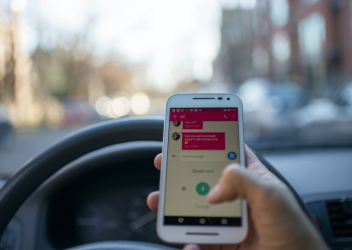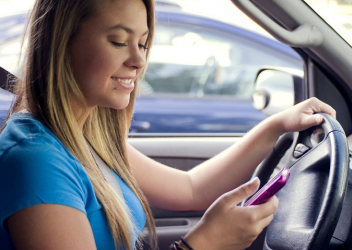Research In Action
Research In Action
Breadcrumb

Cell phone use while driving has been linked to increased crash and near-crash risk. Despite the implementation of bans on handheld cell phone use while driving in many states, crash reduction results are inconsistent.
While distracted driving is dangerous enough among adult experienced drivers, it’s even more dangerous for young drivers, particularly those with little experience behind the wheel. This is because young novice drivers may have limited abilities to focus their attention and control their impulses.
With colleagues Flaura Winston, MD, PhD and Dan Romer, PhD, I recently published study findings in the International Journal of Environmental Research and Public Health that revealed young adult drivers (ages 18-24) who self-report cell phone use while driving also engage in other risky driving behaviors, such as speeding, running red lights, and impatiently passing a car in front on the right.
A Pattern of Risky-Driving Behaviors?
While young novice drivers are at the greatest risk of crashing overall, not all engage in risky driving behaviors or crash. Our finding describing cell phone use while driving as part of a pattern of risk-taking may explain why some young adult drivers are more prone to crash involvement than other drivers their age.
This finding, however, is not new: We previously published a paper with the same finding. This newer study builds and expands on this prior work in two key ways:
- It goes further by replicating the same finding in a larger sample of 384 young drivers from across the United States, not just in one geographical area.
- It includes measures of personality traits to better understand the underlying individual characteristics that make some young adults engage in more risky driving behaviors than others their age:
- Those who more frequently engaged in this pattern of risk-taking were more impulsive (act-without-thinking) than those who didn’t take as many risks on the road.
- Sensation seeking was also associated with crashes but independently of risky driving practices and impulsivity.
Taken together, these two studies suggest that it may be more beneficial to promote safe driving behavior more broadly than concentrating on combating one risky driving behavior, such as texting while driving. This makes sense since teen drivers who engage in one risky behavior are also likely to engage in other dangerous behaviors that can lead to crashes.
Our newer study also suggests that assessment of personality traits, such as impulsivity, may be helpful to identify drivers most at risk in order to provide more targeted interventions promoting safe driving, particularly among those with weaker impulse control.






